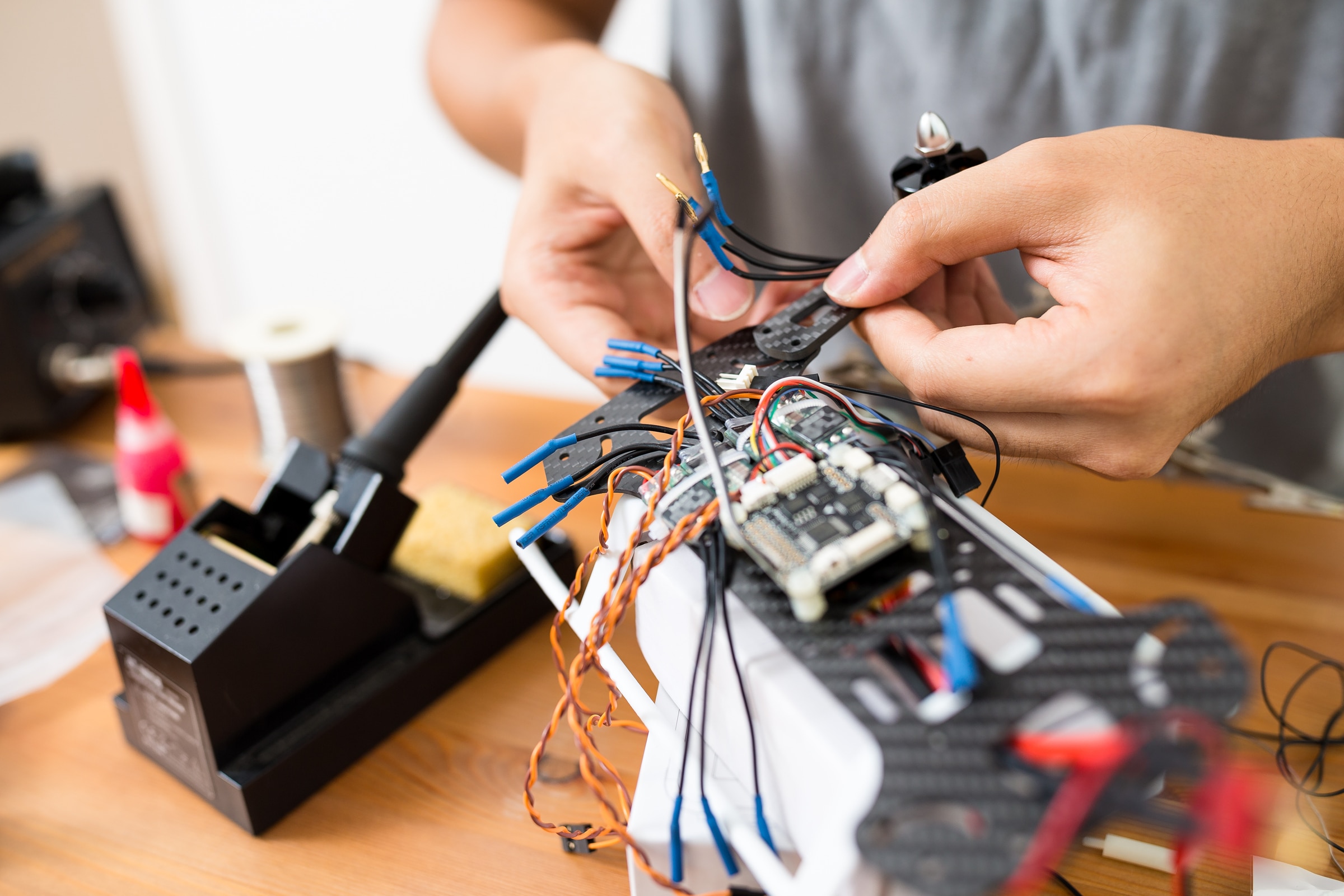Mountain bike racing is not just an adrenaline-pumping sport—it’s an amazing spectacle for the viewers. However, the real challenge is capturing the fast-paced action in a way that fully communicates the thrill of the race. Thankfully, advancements in drone technology have revolutionized the way we experience these events. Today, we’ll dive into how drone technology can be utilized to enhance the spectator experience in mountain bike racing.
Capturing the Full Picture: Drones and Mountain Bike Race Coverage
Traditional coverage of mountain bike races often fails to capture the full picture due to the limitations of static cameras and the complex terrain. Drones can overcome these hurdles and provide a more comprehensive coverage.
Avez-vous vu cela : What is the Role of Individualized Hydration Strategies in Ultra-Distance Swimming?
Drones, equipped with high-definition cameras, can follow racers through dense forests, across steep hills, and along winding tracks. Unlike fixed cameras, they can provide dynamic, bird’s-eye view shots that capture the complete journey of the racers. With drones, spectators get to see the actual distance between racers, the challenging nature of the trails, and the breathtaking scenic beauty surrounding the race.
The ability of drones to adjust their height also comes in handy. They can swoop low to capture close-range shots and then ascend quickly to reveal the broader context. This kind of coverage immerses the viewers, making them feel a part of the race.
Avez-vous vu cela : What’s the Latest in Smart Helmet Technology for Reducing Concussions in American Football?
Immersive Live Streaming: Sharing the Thrill in Real Time
Imagine being able to watch a mountain bike race from the perspective of the rider, or even from the bike itself. With drone technology, this is a reality. Drones can offer live streaming of the race, allowing spectators to share in the thrill of the moment, in real time.
Live streaming through drones can go beyond the traditional broadcast on television. It can also be broadcasted online, making it accessible to a global audience. With the use of Virtual Reality (VR) headsets, the viewers can experience a fully immersive experience, feeling as though they are actually present at the race.
The possibility of 360-degree live streaming further amplifies the experience. Spectators can choose their own viewpoint and focus on what interests them the most. This interactive aspect not only makes the viewing experience more immersive but also more personal.
Drone Piloting Skills: The New Dimension to the Race
Introducing drones in mountain bike races not only enhances the spectator experience but also adds a new dimension to the event – drone piloting. Expert drone pilots, skilled in navigating through complex terrains, could become as much a part of the race as the bikers themselves.
The drone pilots’ ability to track the bikers, anticipate their moves, and adjust the camera angles can greatly affect the quality of the footage. Their expertise is crucial in capturing the key moments of the race —the overtakes, the tight turns, the slips, and the sprint finishes. Thus, the skill of drone piloting becomes an important factor in enhancing the spectator experience.
Safety and Regulatory Considerations of Using Drones
While the potential of drones in enhancing the spectator experience is immense, it’s important to take into account the safety and regulatory considerations associated with their use.
Drones must be navigated carefully to avoid collisions with the participants, spectators, or other drones. The operators should be well-trained and familiar with the race course. Furthermore, drones must be maintained properly to prevent any technical malfunctions during the race.
From a regulatory perspective, the use of drones should comply with the local laws and regulations. This includes obtaining necessary permissions or licenses, respecting the privacy rights of individuals, and adhering to the rules related to flying height and proximity to people.
The Future of Mountain Bike Racing: Drones and Beyond
The integration of drone technology in mountain bike races has already started transforming the way spectators experience these events. However, this is just the beginning. As drone technology continues to evolve, its potential uses in mountain bike racing are likely to increase.
For instance, the development of AI-powered drones could take the coverage of mountain bike races to a whole new level. These drones, equipped with advanced navigation and object tracking features, could autonomously follow the racers, capturing every aspect of the race more effectively.
Moreover, the future might see more integrated applications of drone technology. Races could be designed specifically with drone coverage in mind, creating unique viewing experiences that blend the natural challenges of mountain biking with the technological capabilities of drones.
As we continue to explore the potential of drone technology in enhancing the spectator experience, the future of mountain bike racing looks more exciting than ever.
The Intersection of Sports and Technology: Drones in Mountain Biking Events
As drone technology continues to evolve, it’s increasingly finding applications in various sectors, including the sports industry. The use of drones in mountain bike racing is one such instance where technology has significantly amplified the spectator experience.
Over the years, major sporting events like the Tour de France and the UCI Mountain Bike Series have embraced drone technology. Companies such as Red Bull are investing in drone racing, further highlighting the potential of this technology in sports coverage. With the ability to provide real-time coverage, drones have become an indispensable tool in sports management.
Drone technology allows for more than just a bird’s-eye view of the race track. It enables broadcasters to provide viewers with a detailed insight into the race, from the bikers’ techniques to the logistical aspects of the race. Post-race, the footage captured by drones can be used for detailed analysis and review.
Moreover, drones can be networked and programmed to cover different aspects of the race, providing multi-angle coverage that was previously only possible with multiple static cameras. This multi-dimensional coverage is particularly useful in cross-country racing championships, where the terrain and the race track can be quite complex.
Importantly, this technology can also enhance the safety of the sporting events. Drones can be used to monitor the race track for potential hazards and provide real-time updates to the event organizers. They can also be deployed in case of an emergency, such as delivering first aid or locating lost or injured racers.
The Future of Sports Coverage: Warner Bros, Tom Davidson, and the Role of Virtual Reality
The use of drones in sports coverage is not just a passing trend. It’s set to become a staple in the sports industry, with major players like Warner Bros and sports innovators like Tom Davidson investing in this technology. The future of sports coverage could very well be a mix of real time drone footage and virtual reality.
Warner Bros’ Discovery has been investing in drone technology for sports coverage, recognizing its potential to transform the viewer experience. The company is exploring ways to take advantage of drone technology for broadcasting a variety of sports events, including mountain bike races.
Tom Davidson, a pioneer in the sports industry, has been a vocal advocate for the integration of technology in sports management. He believes that drone technology, combined with virtual reality, can revolutionize the way spectators experience sporting events.
The future for sports viewers could involve strapping on a VR headset and immersing themselves in the action. With a drone providing 360-degree live streaming, spectators could virtually navigate the race track, follow their favorite racer, or choose their own vantage point.
Such advancements could blur the lines between the spectators and the racers, creating a more engaging and interactive viewing experience. Thus, as we look ahead, the combination of drone technology and virtual reality holds the promise of taking sports coverage to new heights.
Conclusion
Mountain bike racing, with its thrilling action and picturesque venues, is a perfect sport to benefit from the advancements in drone technology. From live broadcasting to safety applications, drones have the potential to enhance both the spectator experience and the management of the sporting event.
While there are safety and regulatory hurdles to overcome, the successful integration of drone technology in mountain bike racing suggests a promising future. With the continuous evolution of drone technology, and its integration with other technologies like virtual reality, we can expect a transformative impact on how we experience and enjoy sports. Indeed, the future of mountain bike racing—and the sports industry at large—looks more thrilling than ever.







